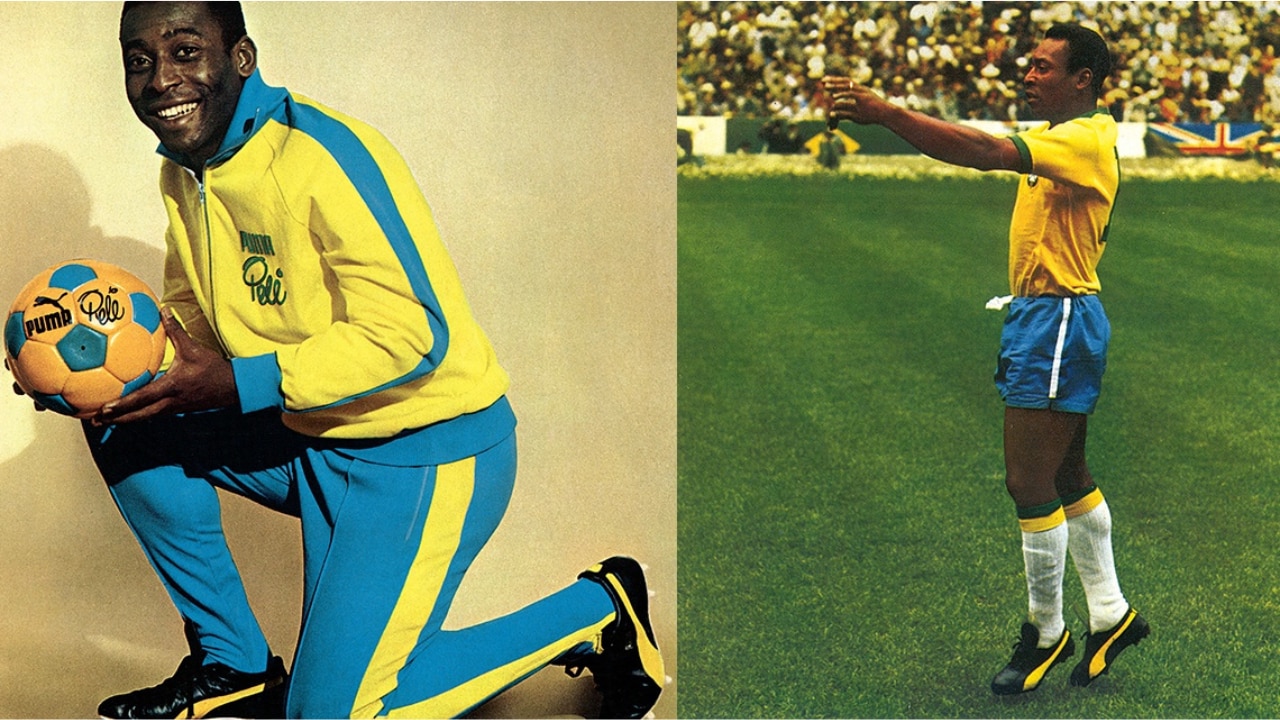It would have to be the stealthiest marketing activity ever involving a brand ambassador.
The 1970 FIFA World Cup was surrounded by a lot of fanfare. It was also a time when Brazil was invincible and coloured pictures were introduced for the first time from a major multilateral event.
Hans Henningsen, a representative of the PUMA, reached out to Pelé during the 1970 FIFA World Cup. A $25,000 offer was made to him (with an additional $100,000 in subsequent deals) to make Puma synonymous with the sport for decades.
Just seconds before Brazil and Peru’s World Cup quarterfinal match began, Pelé walked straight into the middle of the field and asked for time to tie his shoes. As he bent down and grabbed the laces, millions of people around the world watched.
The thick, curved stripe was unmistakable, as was the message it silently communicated: “Pelé, the greatest living athlete at the time, was wearing Puma boots.”
Let’s fast forward to 2021.
In addition to innovating with its products, Adidas is slowly understanding the importance of marketing. With Parley’s foundation, they pivot toward a more purposeful brand-building initiative – Save The Ocean.
As part of their brand ambassador campaign, Rohit Sharma wore a new pair of shoes in every match during the 2020 IPL season.
All of these are examples of acts involving Brand Ambassadors that go beyond advertising and pitchmanship.
Consumers are becoming more averse to advertising, so brands need to create acts that receive earned media, conversations, and chatter so that they remain top of mind. Rather than just selecting the names of one’s favorite celebrities, they should invest more time in considering what to do with an Influencer.
Once, celebrities would hold the product and say things like, “Drink it.”. I do!”. Today Influencer marketing has evolved beyond pitchmanship. Many celebrities are willing to co-create products with brands they endorse. FWRD (part of the REVOLVE Group) announced Kendal Jenner as their creative director recently. Justin Timberlake did the same for Budweiser Bud Light Platinum in 2013.
Celebrities will be more willing to exchange equity with brands to offer their services as BDNOs (Brand Directors in Name Only) or CDNOs (Creative Directors in Name Only). Content creators and influencers are the ones who have cracked new-age marketing code with cult Instagram followership, reels and thumb-stopping content, personal engagement and envious feed aesthetics.
Brands are also noticing “the rise of OTT stars”.
Stars like Rohit Saraf, Divyendu Sharma, and Vikram Massey from Netflix and Amazon Prime would be ideal for brands that appeal to younger audiences. The Souled Store, Misfit by boAt, and H&M are among the brands they’ve already endorsed.
But their popularity still can’t be matched to that of the mega-stars. However, I doubt what mega-stars can contribute to a brand with the highest top-of-mind recall in its category.
The brand should stay away from getting a mega-star if awareness is not an issue. There is always a misattribution risk associated with bigger stars since their ads run simultaneously for brands across several categories.
Sushant Sharma is brand manager of boAt. Views expressed are personal.
